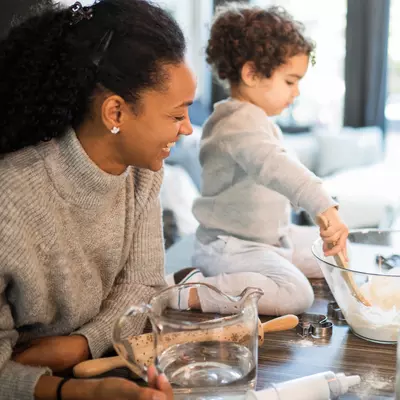- AdventHealth

Falls are one of the most common causes of emergency department visits among older adults.
They may seem to come out of nowhere, but most falls can be prevented by making minor changes to your home and habits. Safety features like shower grab bars and balance-building exercises are some of the best ways to prevent falls.
Preventing falls also protects brain health, considering adults 75 and older are at the highest risk for brain injuries; most concussions among older adults are caused by falls.
AdventHealth wants to arm you with the information you need to take control of your health. Taking simple safeguards against falls can give you the confidence to stay active, at home and on the go.
Fall protection is also an important way for older adults to keep living the independent life they want. More than 95 percent of broken hips, for example, are caused by falls.
It all comes down to two things: shaping your environment and strengthening your body. When you’re looking to prevent falls, you’ll want to start where most of them happen — in the home.
Ways to Fall-Proof Your Home
Studies have shown kitchens, bedrooms, living rooms, and, perhaps most of all, bathrooms are some of the most fall-prone areas of a home.
By themselves, each of these actions might seem small. But together, these steps add up:
- Keep floors free of wires, cords, clutter and throw rugs.
- Ensure the carpet is securely fastened to the floor and that large area rugs have skid-proof backing underneath them.
- Install grab bars inside and outside the bathtub and shower and beside the toilet.
- Clean up spills immediately, especially in bathrooms and other areas with slick flooring.
- Make sure stairwells are well-lit and have sturdy handrails installed on both sides.
- Use a cordless phone or cellphone so there is one less cord to trip over and the phone can always be near you.
Staying Safe on the Go
Though you can’t fall-proof the outside world like you can your home, there are still steps you can take to stay on your feet when you leave the house.
Here are several:
- Wear shoes with low heels and rubber soles.
- Use handrails on stairs, escalators and inclines.
- Clear leaves, snow, ice, and clutter from sidewalks, driveways, porches and decks.
- Slow down and step carefully when going up or down curbs.
- Carry personal items in a shoulder bag, small backpack, or fanny pack to keep hands free to grasp railings.
- Use a cane or walker for a steady gait.
Build Your Balance
Becoming steadier on your feet can help you prevent falls no matter where you are.
Here’s one balance exercise to add stability when you’re standing and walking:
- Stand behind a sturdy chair, grasping it with both hands.
- Lift one foot off the ground. Hold for 10 seconds.
- Repeat 10 to 15 times.
- Lift the other foot. Hold for 10 seconds.
- Repeat 10 to 15 times.
- Do steps 1 through 5 again.
As your balance improves, try grasping the chair with one hand or just a finger.
Walking or active hobbies like gardening are also great ways to stay in better shape as you age. In addition to helping you prevent falls, exercise boosts your mood, your spirit and can even protect your brain from dementia.
And it’s never too late to start an exercise program.
What If You Fall?
While you can lower your chances of a fall, it can still happen despite your best efforts. But not all falls are created equal, and there are ways to reduce your risk of getting hurt if you do fall.
First, don’t tense up as you fall. Instead, let your body slump and roll, helping to spread out the impact over your body.
It’s better to fall forward or backward (onto your seat) rather than to the side. A sideways tumble can raise the chances you’ll break a hip.
If you’ve fallen, don’t worry about trying to get up immediately. Lie still until you’re calmer, then decide whether you’re hurt — if you are, getting up too soon could make it worse.
If you can get up on your own, roll onto your side and take another break. Then turn onto your hands and knees and crawl to a chair. Put your hands on the seat and, with one knee on the floor, slide the other foot forward and plant it on the ground. Slowly rise and sit in the chair.
Afterward, it’s normal to feel shaken up. But once a doctor clears you of any injury, don’t let a fear of falling keep you from exercising, which is so important to preventing other falls.
AdventHealth believes fall prevention is a part of whole-person care. It helps preserve your independence while building the confidence to stay active. When a health problem can’t wait, our urgent care centers and emergency departments offer convenient, on-demand care.
For a list of all of your options, check out our website.



